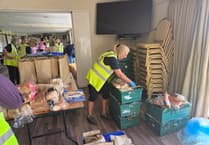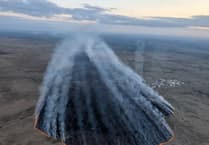DARTMOOR National Park’s development aspirations have been outlined in a new economic prospectus, created by Dartmoor and Exmoor national park authorities.
The regeneration of Princetown, extension of Exeter railway to Okehampton and the granite and gears cycling scheme are all discussed in the report, which comes as government funding to national parks faces significant cuts.
The report also looks at tourism relating to the parks, revealing that Dartmoor and Exmoor attract over eight million visitor days and generate £428-million for the greater Dartmoor and Exmoor areas annually.
Groups campaigning against the government spending cuts are using these surprisingly large figures to convey how national parks can be conducive to a healthy economy.
Fiona Howie, Chief Executive for the Campaign for National Parks said: ‘We are delighted to see that Dartmoor and Exmoor National Parks’ contribution to the region’s economy has been recognised in this important report.
‘We are especially pleased that the Heart of the South West Local Enterprise Partnership (HotSW LEP) is working hand in hand with the two national parks to improve connectivity in transport and broadband.
‘One of our key manifesto commitments for the Westminster Government has been to ask for funding allocated to LEPs to be unlocked to support jobs and infrastructure in national parks.
‘We would urge Defra to look closely at this report, which shows the importance of national parks to the rural economy, before embarking on yet another round of cuts to national park authority budgets.’
National park authorities have had their budgets cut by up to 40% in real terms over the past five years and there is real concern that Defra – the lead department for national parks – will have to make huge cuts to meet the Government’s £20-billion savings plans over the lifetime of this parliament.
When the cuts were first proposed, Peter Harper, Chairman of Dartmoor National Park Authority said: ‘We are passionate about managing Dartmoor as an environmental and cultural asset now and for future generations.
‘We know that this high quality environment, the “national park” brand, is a key contributor to the regional economy, with tourism on Dartmoor attracting 2.3-million visitors a year, generating £120-million for the local economy.’
Following the release of the prospectus Mr Harper added: ‘We work hard to support and promote sustainable development within our national parks. We also know that these economic assets are important to wider regional growth through the visitor economy, quality of life and health and recreational offer.
‘Our national parks are national and regional assets; this prospectus shares the innovative work we have undertaken to help support growth within our boundaries and beyond.’
As well as offering landscapes and contributing to local tourism, the parks offer a place to work, live and play, attracting entrepreneurs and serving as a source of inspiration for creative industries, supporting the area’s wider growth.
Together Dartmoor and Exmoor are home to 44,000 people and more than 3,000 businesses, with an annual turnover of £770-million.
Businesses which have been particularly successful are also included in the report, ranging from a cookery school in Ashburton which employs 40 members of staff and attracts over 3,000 cooks a year for courses, to a 32-year-old holiday business in Chagford and holiday property owners on Dartmoor and beyond.
Chair of the Heart of the South West Local Enterprise Partnership (HotSW LEP) Steve Hindley said: ‘Dartmoor and Exmoor National Parks are key partners in the HotSW LEP and are exemplars of the distinctive assets of our area that we so proudly promote.
‘This prospectus shows the value of the national parks to our area and that of the UK and we welcome their drive to showcase their unique selling points in the national and international arena.’
It is estimated in the report that Dartmoor and Exmoor provide water for around 80% of the population of Devon and Somerset.
Dartmoor’s woodlands also contribute to ecological and economic benefits in the area, particularly by developing productive systems such as coppicing.
Despite success in a range of different areas, both national parks are keen to continue to build on their contribution to regional growth.
There are three key areas that have been identified for investment to release future growth potential; these include developments that will benefit the area, like improving mobile coverage, introducing superfast broadband and improving rail and road infrastructure.
The report suggests developing rural skills, brand recognition and increased productivity through supporting key sectors such as farming, forestry food and tourism.
Place and product are promoted by recognising the value of the national park and local supply chains and the unique distinctive product they offer to the region.
There is also a need for continued investment managing the national park resource. Without care for the environment, access to it and promotion the resource will degrade and opportunities for sustainable rural growth will be lost.
The report details a range of other developments which aim to support pioneering new ways to unlock economic growth within the national parks.



-with-lightning).jpeg?width=209&height=140&crop=209:145,smart&quality=75)
Comments
This article has no comments yet. Be the first to leave a comment.